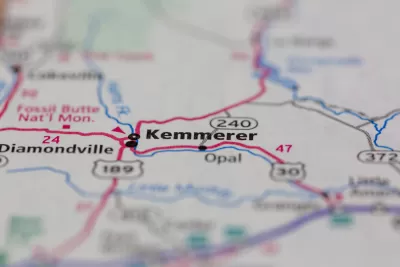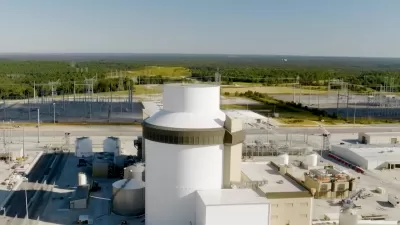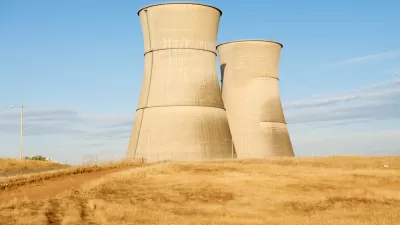Microsoft co-founder Bill Gates had shovel-in-hand for the groundbreaking of his company's small-scale nuclear power plant in Kemmerer, Wyoming, on June 10.

It was in 1978, 46 years ago, that the Shearon Harris Nuclear Power Plant in North Carolina began construction.
Unlike the Harris Nuclear Plant, which had a capacity of 860 megawatts when built, the pilot Natrium nuclear power plant in Kemmerer “is designed to generate a consistent 345 megawatts of power — enough energy to power about 250,000 homes — with a capability of ramping up to 500 megawatts for short periods, according to the Bellevue, Washington-based TerraPower,” reported Dustin Bleizeffer, who covers energy and climate for WyoFile, on June 10.
Rather than the industry’s existing standard of massive nuclear power plants that consume a lot of water, Natrium is much smaller and will use liquid sodium to cool the reactor.
Construction of the small modular reactor, posted here in November 2021, was delayed by the unprovoked invasion of Ukraine by Russia three months later, resulting in legislation last month affecting the fuel supply. Gates, appearing on CBS's Face the Nation on June 9, “noted that...suppliers in the United Kingdom and South Africa, along with an eventual supply from uranium mines in the U.S. and Canada will allow the project to go forward.”
A final note by Bleizeffer on the importance of the plant to Wyoming and a sign of the transition to cleaner fuels for the nation's largest coal-producing state.
The $4 billion construction project is also considered an economic lifeline for southwest Wyoming, particularly the adjacent towns of Kemmerer and Diamondville, a region impacted by fossil fuels’ decline.
Hat tip to Sammy Roth, climate columnist for the Los Angeles Times newsletter, Boiling Point.
FULL STORY: Microsoft’s Gates breaks ground on novel nuclear power plant in Wyoming

Study: Maui’s Plan to Convert Vacation Rentals to Long-Term Housing Could Cause Nearly $1 Billion Economic Loss
The plan would reduce visitor accommodation by 25,% resulting in 1,900 jobs lost.

North Texas Transit Leaders Tout Benefits of TOD for Growing Region
At a summit focused on transit-oriented development, policymakers discussed how North Texas’ expanded light rail system can serve as a tool for economic growth.

Using Old Oil and Gas Wells for Green Energy Storage
Penn State researchers have found that repurposing abandoned oil and gas wells for geothermal-assisted compressed-air energy storage can boost efficiency, reduce environmental risks, and support clean energy and job transitions.

Private Donations Propel Early Restoration of Palisades Playground
Los Angeles has secured over $1.3 million in private funding to restore the Pacific Palisades playground months ahead of schedule, creating a modern, accessible space that supports community healing after recent wildfires.

From Blight to Benefit: Early Results From California’s Equitable Cleanup Program
The Equitable Community Revitalization Grant (ECRG) program is reshaping brownfield redevelopment by prioritizing projects in low-income and environmental justice communities, emphasizing equity, transparency, and community benefits.

Planting Relief: Tackling Las Vegas Heat One Tree at a Time
Nevada Plants, a Las Vegas-based nonprofit, is combating the city’s extreme urban heat by giving away trees to residents in underserved neighborhoods, promoting shade, sustainability, and community health.
Urban Design for Planners 1: Software Tools
This six-course series explores essential urban design concepts using open source software and equips planners with the tools they need to participate fully in the urban design process.
Planning for Universal Design
Learn the tools for implementing Universal Design in planning regulations.
Ascent Environmental
Borough of Carlisle
Institute for Housing and Urban Development Studies (IHS)
City of Grandview
Harvard GSD Executive Education
Toledo-Lucas County Plan Commissions
Salt Lake City
NYU Wagner Graduate School of Public Service





























